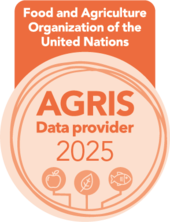Machine Learning para la Clasificación y Análisis de los Índices de Biomasa y su relación con el Cambio Climático, Desierto de Atacama
DOI:
https://doi.org/10.57188/manglar.2024.010Resumen
En este trabajo usamos Machine Learning (Randon Forest) como herramienta para clasificar la biomasa y calcular los índices de vegetación buscando identificar las características de la cobertura vegetal en la cabecera del desierto Atacama. Se busca establecer la correlación entre los índices de vegetación y la precipitación, a fin de conocer su confiabilidad sobre la climatología en esta región. Fue importante el análisis geoespacial basado en Google Earth Engine (GEE) y el procesamiento de imágenes Landsat 5 ETM y Landsat 8 OLI/TIRS, para el período 1985 - 2022, lo que permitió caracterizar el cambio climático. El NDVI, SAVI, GVI y RVI han sido probados y validados en sistemas áridos. El NDVI responde positivamente a la precipitación en temporada húmeda y en forma débil en la temporada de lluvias invernales. Se confirma que el NDVI alto corresponde al verano, después de una sequía prolongada. Hacia los años 2020 y 2022, se registra un aumento de cobertura vegetal en lugares de mayor temperatura, evidenciando cambio climático y reflejado en los índices de biomasa.
Descargas
Referencias
Abatzoglou, J. T., Dobrowski, S. Z., Parks, S. A., & Hegewisch, K. C. (2018). TerraClimate, a high-resolution global dataset of monthly climate and climatic water balance from 1958–2015. Scientific Data, 5(1), 170191. https://doi.org/10.1038/sdata.2017.191
Aboutalebi, M., Torres-Rua, A. F., McKee, M., Kustas, W., Nieto, H., & Coopmans, C. (2018). Behavior of vegetation/soil indices in shaded and sunlit pixels and evaluation of different shadow compensation methods using UAV high-resolution imagery over vineyards. Proceedings of Spie the International Society for Optical Engineering, 10664, 6. https://doi.org/10.1117/12.2305883
Alves, K. M. A. da S., D’avila, M. C. P., Nóbrega, R. S., & Albarran, D. O. (2019). Spatial and temporal variability of vegetation cover in the moxotó watershed, Pernambuco, Brasil. Diálogo Andino, 58, 139–150. https://doi.org/10.4067/S0719-26812019000100139
Alvino, F. C. G., Aleman, C. C., Filgueiras, R., Althoff, D., & da Cunha, F. F. (2020). VEGETATION INDICES FOR IRRIGATED CORN MONITORING. Engenharia Agrícola, 40(3), 322–333. https://doi.org/10.1590/1809-4430-eng.agric.v40n3p322-333/2020
Ariza, A., & Ramirez, H. M. (2014). Modelo Batimetrico derivado de imagenes Landsat ETM+ en zonas de arrecifes tropicales. Revista Cartográfica, (90), 43+.
Bagherzadeh, A., Hoseini, A. V., & Totmaj, L. H. (2020). The effects of climate change on normalized difference vegetation index (NDVI) in the Northeast of Iran. Modeling Earth Systems and Environment, 6(2), 671–683. https://doi.org/10.1007/s40808-020-00724-x
Bawden, R. (2017). Global change and its consequences for the world’s arid lands. In Climate Variability Impacts on Land Use and Livelihoods in Drylands (pp. 59–71). Springer International Publishing. https://doi.org/10.1007/978-3-319-56681-8_3
Benabdelouahab, T., Balaghi, R., Hadria, R., Lionboui, H., Minet, J., & Tychon, B. (2015). Monitoring surface water content using visible and short-wave infrared SPOT-5 data of wheat plots in irrigated semi-arid regions. International Journal of Remote Sensing, 36(15), 4018–4036. https://doi.org/10.1080/01431161.2015.1072650
Breiman, L. (2001). Random forests. Machine Learning, 45(1), 5–32. https://doi.org/10.1023/A:1010933404324/METRICS
Carlson, T. N., & Traci Arthur, S. (2000). The impact of land use — land cover changes due to urbanization on surface microclimate and hydrology: a satellite perspective. Global and Planetary Change, 25(1–2), 49–65. https://doi.org/10.1016/S0921-8181(00)00021-7
Chucuya, S., Vera, A., Pino-Vargas, E., Steenken, A., Mahlknecht, J., & Montalván, I. (2022). Hydrogeochemical Characterization and Identification of Factors Influencing Groundwater Quality in Coastal Aquifers, Case: La Yarada, Tacna, Peru. International Journal of Environmental Research and Public Health, 19(5), 2815. https://doi.org/10.3390/ijerph19052815
Condori-Tintaya, F., Pino-Vargas, E., & Tacora-Villegas, P. (2022). Pérdida de suelos por erosión hídrica en laderas semiáridas de la subcuenca Cairani-Camilaca, Perú. Idesia, 40(2), 7–15. https://doi.org/10.4067/S0718-34292022000200007
da Silva Alves, K. M. A., D’avila, M. C. P., Nóbrega, R. S., & Albarran, D. O. (2019). Variabilidad espacial y temporal de la cobertura vegetal de los años 1984 a 2011 en la cuenca hidrográfica del río Moxotó, Pernambuco, Brasil. Diálogo Andino, 58, 139–150. https://doi.org/10.4067/S0719-26812019000100139
Garreaud, R. D., Molina, A., & Farias, M. (2010). Andean uplift, ocean cooling and Atacama hyperaridity: A climate modeling perspective. Earth and Planetary Science Letters, 292(1–2), 39–50. https://doi.org/10.1016/j.epsl.2010.01.017
Garreaud, R., Vuille, M., & Clement, A. C. (2003). The climate of the Altiplano: observed current conditions and mechanisms of past changes. Palaeogeography, Palaeoclimatology, Palaeoecology, 194(1–3), 5–22. https://doi.org/10.1016/S0031-0182(03)00269-4
Gaur, M. K., & Squires, V. R. (2017a). Climate variability impacts on land use and livelihoods in drylands. In Climate Variability Impacts on Land Use and Livelihoods in Drylands. Springer International Publishing. https://doi.org/10.1007/978-3-319-56681-8
Gaur, M. K., & Squires, V. R. (2017b). Geographic extent and characteristics of the world’s arid zones and their peoples. In Climate Variability Impacts on Land Use and Livelihoods in Drylands. Springer International Publishing. https://doi.org/10.1007/978-3-319-56681-8_1
Gomez-Tunque, K. R., Ingol-Blanco, E., Mejia-Marcacuzco, A., Chávarri-Velarde, E., & Pino-Vargas, E. (2023). Deep Neural Networks for ENSO Prediction in the Niño 3.4 and Niño 1+2 Regions. World Environmental and Water Resources Congress 2023, 307–316. https://doi.org/10.1061/9780784484852.030
Gupta, R. K. (1992). NOAA/AVHRR vegetation indices and agriculture-meteorology processes. Advances in Space Research, 12(7), 87–90. https://doi.org/10.1016/0273-1177(92)90201-8
Hashim, B. M., Sultan, M. A., Attyia, M. N., Al Maliki, A. A., & Al-Ansari, N. (2019). Change detection and impact of climate changes to Iraqi southern marshes using Landsat 2 MSS, Landsat 8 OLI and Sentinel 2 MSI data and GIS applications. Applied Sciences (Switzerland), 9(10). https://doi.org/10.3390/app9102016
Tin Kam Ho (1995). Random decision forests. Proceedings of 3rd International Conference on Document Analysis and Recognition, Montreal, QC, Canada, doi: 10.1109/ICDAR.1995.598994.
Houston, J., & Hartley, A. J. (2003). The central Andean west-slope rainshadow and its potential contribution to the origin of hyper-aridity in the Atacama Desert. International Journal of Climatology, 23(12), 1453–1464. https://doi.org/10.1002/joc.938
Huete, A. (1988). A soil-adjusted vegetation index (SAVI). Remote Sensing of Environment, 25(3), 295–309. https://doi.org/10.1016/0034-4257(88)90106-X
Huete, A., Didan, K., Miura, T., Rodriguez, E., Gao, X., & Ferreira, L. (2002). Overview of the radiometric and biophysical performance of the MODIS vegetation indices. Remote Sensing of Environment, 83(1–2), 195–213. https://doi.org/10.1016/S0034-4257(02)00096-2
Jiang, F., Jiang, Y., Zhi, H., Dong, Y., Li, H., Ma, S., Wang, Y., Dong, Q., Shen, H., & Wang, Y. (2017). Artificial intelligence in healthcare: past, present and future. Stroke and Vascular Neurology, 2(4), 230–243. https://doi.org/10.1136/svn-2017-000101
Kakarla, S. C., Zhu, Z., Ampatzidis, Y., Fountas, S., Ehsani, R., & Pardalos, P. (2022). Editorial: Artificial Intelligence Applications in Specialty Crops. Frontiers in Plant Science, 13. https://doi.org/10.3389/fpls.2022.866724
Kauth, R. and Thomas, G. (1976). The Tasselled Cap-A Descripción gráfica del desarrollo espectral-temporal de los cultivos agrícolas según lo visto por Landsat. Simposio LARS 1976 de Procesamiento Mecánico de Datos de Detección Remota, West Lafayette, IN: Purdue University, 4B41-4B51.
Kawabata, A., Ichii, K., & Yamaguchi, Y. (2001). Global monitoring of interannual changes in vegetation activities using NDVI and its relationships to temperature and precipitation. International Journal of Remote Sensing, 22(7), 1377–1382. https://doi.org/10.1080/01431160119381
Kua, J., Loke, S. W., Arora, C., Fernando, N., & Ranaweera, C. (2021). Internet of Things in Space: A Review of Opportunities and Challenges from Satellite-Aided Computing to Digitally-Enhanced Space Living. Sensors, 21(23), 8117. https://doi.org/10.3390/s21238117
Machaca-Pillaca, R., Pino-Vargas, E., Ramos-Fernández, L., Quille-Mamani, J., & Torres-Rua, A. (2022). Estimación de la evapotranspiración con fines de riego en tiempo real de un olivar a partir de imágenes de un drone en zonas áridas, caso La Yarada, Tacna, Perú. Idesia, 40(2), 55–65. https://doi.org/10.4067/S0718-34292022000200055
Malanson, G. P., & Alftine, K. J. (2016). Ecological Impacts of Climate Change. In Biological and Environmental Hazards, Risks, and Disasters (397–426). https://doi.org/10.1016/B978-0-12-394847-2.00022-X
Martinez, Alex de la Iglesia, and S. M. Labib. 2023. Demystifying Normalized Difference Vegetation Index (NDVI) for Greenness Exposure Assessments and Policy Interventions in Urban Greening. Environmental Research 220(115155). doi: 10.1016/j.envres.2022.115155.
Munir, S., Seminar, K. B., Sudradjat, Sukoco, H., & Buono, A. (2022). The Use of Random Forest Regression for Estimating Leaf Nitrogen Content of Oil Palm Based on Sentinel 1-A Imagery. Information, 14(1), 10. https://doi.org/10.3390/info14010010
Muñoz-Sabater, J., Dutra, E., Agustí-Panareda, A., Albergel, C., Arduini, G., Balsamo, G., Boussetta, S., Choulga, M., Harrigan, S., Hersbach, H., Martens, B., Miralles, D. G., Piles, M., Rodríguez-Fernández, N. J., Zsoter, E., Buontempo, C., & Thépaut, J.-N. (2021). ERA5-Land: a state-of-the-art global reanalysis dataset for land applications. Earth System Science Data, 13(9), 4349–4383. https://doi.org/10.5194/essd-13-4349-2021
Nieto, H., Kustas, W. P., Torres-Rúa, A., Alfieri, J. G., Gao, F., Anderson, M. C., White, W. A., Song, L., Alsina, M. del M., Prueger, J. H., McKee, M., Elarab, M., & McKee, L. G. (2019). Evaluation of TSEB turbulent fluxes using different methods for the retrieval of soil and canopy component temperatures from UAV thermal and multispectral imagery. Irrigation Science, 37(3), 389–406. https://doi.org/10.1007/s00271-018-0585-9
Pearson, R. L. and Miller, L. D. (1972). Remote mapping of standing crop biomass for estimation of the productivity of the short-grass Prairie, Pawnee National Grassland, Colorado. 8th International Symposium on Remote Sensing of Environment, 1357–1381.
Pino-Vargas, & Ascencios-Templo, D. (2021). La implementación de veda como una herramienta para controlar la degradación del acuífero costero La Yarada, Tacna, Perú. Diálogo Andino, 66, 489–496. https://doi.org/10.4067/S0719-26812021000300489
Pino-Vargas, E., Chávarri-Velarde, E., Ingol-Blanco, E., Mejía, F., Cruz, A., & Vera, A. (2022). Impacts of Climate Change and Variability on Precipitation and Maximum Flows in Devil’s Creek, Tacna, Peru. Hydrology, 9(1), 10. https://doi.org/10.3390/hydrology9010010
Pino-Vargas, E., Espinoza-Molina, J., Chávarri-Velarde, E., Quille-Mamani, J., & Ingol-Blanco, E. (2023). Impacts of Groundwater Management Policies in the Caplina Aquifer, Atacama Desert. Water, 15(14), 2610. https://doi.org/10.3390/w15142610
Pino-Vargas, E. M., & Ascencios, D. R. (2022). Sostenibilidad del cultivo de olivo bajo un enfoque climatológico en una región árida, cabecera del desierto de Atacama. Ciencia y Tecnología Agropecuaria, 23(3). https://doi.org/10.21930/rcta.vol23_num3_art:2652
Pino-Vargas, E. M., & Huayna, G. (2022). Spatial and temporal evolution of olive cultivation due to pest attack, using remote sensing and satellite image processing. Scientia Agropecuaria, 13(2), 149–157. https://doi.org/10.17268/sci.agropecu.2022.013
Pino-Vargas, Taya-Acosta, E., Ingol-Blanco, E., & Torres-Rúa, A. (2022). Deep Machine Learning for Forecasting Daily Potential Evapotranspiration in Arid Regions, Case: Atacama Desert Header. Agriculture, 12(12), 1971. https://doi.org/10.3390/AGRICULTURE12121971
Pino, E. (2019). El acuífero costero La Yarada, después de 100 años de explotación como sustento de una agricultura en zonas áridas: una revisión histórica. Idesia, 37(3), 39–45. https://doi.org/10.4067/S0718-34292019000300039
Pino, E. (2021). Conflictos por el uso del agua en una región árida: caso Tacna, Perú. Diálogo Andino, 65, 405–415. https://doi.org/10.4067/S0719-26812021000200405
Pino, E., & Chávarri, E. (2022). Evidencias de cambio climático en la región hiperárida de la Costa sur de Perú, cabecera del Desierto de Atacama. Tecnología y Ciencias Del Agua, 13(1), 1–34. https://doi.org/10.24850/j-tyca-2022-01-08
Pino, E., Chávarri V., E., & Ramos F., L. (2018). Governability and governance crisis its implications in the inadequate use of groundwater, case coastal aquifer of La Yarada, Tacna, Perú. Idesia, 36(3), 77–85. https://doi.org/10.4067/S0718-34292018005001301
Pino, E., Montalván, I., Vera, A., & Ramos, L. (2019). La conductancia estomática y su relación con la temperatura foliar y humedad del suelo en el cultivo del olivo (Olea europaea L.), en periodo de maduración de frutos, en zonas áridas.La Yarada, Tacna, Perú. Idesia, 37(4), 55–64. https://doi.org/10.4067/S0718-34292019000400055
Pino, E., Ramos, L., Mejía, J., Chávarri, E., & Ascensios, D. (2020). Medidas de mitigación para el acuífero costero La Yarada, un sistema sobreexplotado en zonas áridas. Idesia, 38(3), 21–31. https://doi.org/10.4067/S0718-34292020000300021
Pocco, V., Chucuya, S., Huayna, G., Ingol-Blanco, E., & Pino-Vargas, E. (2023). A Multi-Criteria Decision-Making Technique Using Remote Sensors to Evaluate the Potential of Groundwater in the Arid Zone Basin of the Atacama Desert. Water, 15(7), 1344. https://doi.org/10.3390/w15071344
Richards, David F., Adam M. Milewski, Steffan Becker, Yonesha Donaldson, Lea J. Davidson, Fabian J. Zowam, Jay Mrazek, and Michael Durham (2023). Evaluation and Analysis of Remote Sensing-Based Approach for Salt Marsh Monitoring. Remote Sensing 16(1):2. doi: 10.3390/rs16010002.
Ritter, B., Wennrich, V., Medialdea, A., Brill, D., King, G., Schneiderwind, S., Niemann, K., Fernández-Galego, E., Diederich, J., Rolf, C., Bao, R., Melles, M., & Dunai, T. J. (2019). Climatic fluctuations in the hyperarid core of the Atacama Desert during the past 215 ka. Scientific Reports, 9(1), 1–13. https://doi.org/10.1038/s41598-019-41743-8
Rouse, J. W., Hass, R. H., Schell, J. A., & Deering, D. W. (1973). Monitoring vegetation systems in the great plains with ERTS. In Proceedings of the Third ERTS Symposium; NASA: Washington, DC, USA, 1, 309–317
Sidahmed, A. E. (2017). Recent trends in drylands and future scope for advancement. In Climate Variability Impacts on Land Use and Livelihoods in Drylands. Springer International Publishing. https://doi.org/10.1007/978-3-319-56681-8_2
Singh, R. K., Kumar, P., Kumar, M., Tyagi, K., & Jain, H. (2022). Artificial Machine Learning–Based Classification of Land Cover and Crop Types Using Sentinel‐2A Imagery. In Sustainable Agriculture Systems and Technologies (326–336). Wiley. https://doi.org/10.1002/9781119808565.ch16
Sripada, R. P., Heiniger, R. W., White, J. G., & Weisz, R. (2005). Aerial color infrared photography for determining late-season nitrogen requirements in corn. Agronomy Journal, 97(5), 1443–1451. https://doi.org/10.2134/agronj2004.0314
Stein, B. A., Staudt, A., Cross, M. S., Dubois, N. S., Enquist, C., Griffis, R., Hansen, L. J., Hellmann, J. J., Lawler, J. J., Nelson, E. J., & Pairis, A. (2013). Preparing for and managing change: climate adaptation for biodiversity and ecosystems. Frontiers in Ecology and the Environment, 11(9), 502–510. https://doi.org/10.1890/120277
Vera, A., Pino-Vargas, E., Verma, M. P., Chucuya, S., Chávarri, E., Canales, M., Torres-Martínez, J. A., Mora, A., & Mahlknecht, J. (2021). Hydrodynamics, Hydrochemistry, and Stable Isotope Geochemistry to Assess Temporal Behavior of Seawater Intrusion in the La Yarada Aquifer in the Vicinity of Atacama Desert, Tacna, Peru. Water, 13(22), 3161. https://doi.org/10.3390/w13223161
Vergni, L., & Todisco, F. (2023). A Random Forest Machine Learning Approach for the Identification and Quantification of Erosive Events. Water, 15(12), 2225. https://doi.org/10.3390/w15122225
Wang, Y. J., & Qin, D. H. (2017). Influence of climate change and human activity on water resources in arid region of Northwest China: An overview. In Advances in Climate Change Research, 8(4), 268–278. https://doi.org/10.1016/j.accre.2017.08.004
Wardropper, C. B., & Rissman, A. R. (2019). Adaptations to extreme storm events by conservation organizations. Climatic Change, 152(1), 85–101. https://doi.org/10.1007/s10584-018-2342-8
West, J. M., Courtney, C. A., Hamilton, A. T., Parker, B. A., Julius, S. H., Hoffman, J., Koltes, K. H., & MacGowan, P. (2017). Climate-Smart Design for Ecosystem Management: A Test Application for Coral Reefs. Environmental Management, 59(1), 102–117. https://doi.org/10.1007/s00267-016-0774-3
Wiemken, T. L., & Kelley, R. R. (2020). Machine Learning in Epidemiology and Health Outcomes Research. Annual Review of Public Health, 41(1), 21–36. https://doi.org/10.1146/annurev-publhealth-040119-094437
Xiang, Yunfan, Xiangyu Tian, Yue Xu, Xiaokun Guan, and Zhengchao Chen (2023). EGMT-CD: Edge-Guided Multimodal Transformers Change Detection from Satellite and Aerial Images. Remote Sensing 16(1):86. doi: 10.3390/rs16010086
Yang, Shunfu, Yuluan Zhao, Die Yang, and Anjun Lan. 2024. Analysis of Vegetation NDVI Changes and Driving Factors in the Karst Concentration Distribution Area of Asia. Forests 15(3):398. doi: 10.3390/f15030398
Zhang, B. G. (2000). Asymptotic behavior of solutions of certain difference equations. Applied Mathematics Letters, 13(1), 13–18. https://doi.org/10.1016/S0893-9659(99)00138-X
Zhang, He, Yuan, Liu, Zhou, & Huang. (2019). Machine Learning-Based Spectral Library for Crop Classification and Status Monitoring. Agronomy, 9(9), 496. https://doi.org/10.3390/agronomy9090496
Archivos adicionales
Publicado
Número
Sección
Licencia
Derechos de autor 2024 Santos Gómez, Edwin Pino-Vargas, Germán Huayna, Jorge Espinoza-Molina, Karina Acosta-Caipa, Fredy Cabrera-Olivera

Esta obra está bajo una licencia internacional Creative Commons Atribución 4.0.

Manglar is an open access journal distributed under the terms and conditions of Creative Commons Attribution 4.0 International license









